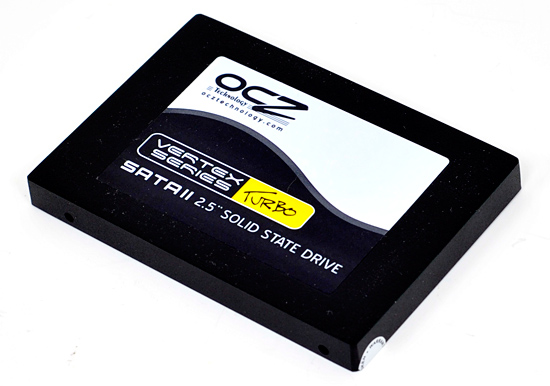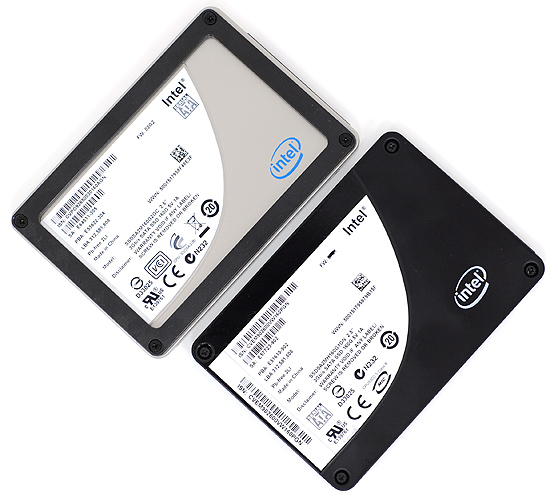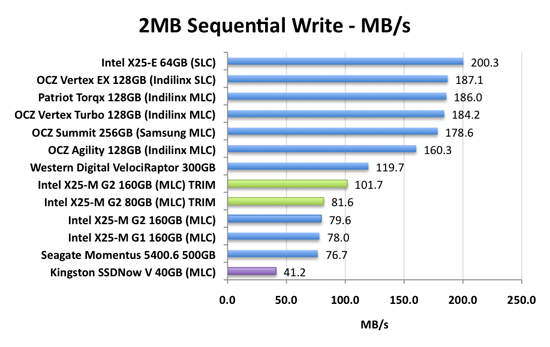The SSD Improv: Intel & Indilinx get TRIM, Kingston Brings Intel Down to $115
by Anand Lal Shimpi on November 17, 2009 7:00 PM EST- Posted in
- Storage
Update 2: Intel has given us an updated timeframe on a fixed version of its TRIM firmware. Intel will release the new firmware by the end of November 2009. More info here.
Update: Some users have had issues with Intel's TRIM firmware bricking their drives, Intel has since pulled the firmware while they figure out what's going on. If you've downloaded it but haven't updated, do so at your own risk. While we haven't had any issues on the three drives we've updated here others have had problems. We'll keep you posted. Intel's official statement is below:
“Yes, we have been contacted by users with issues with the firmware upgrade and are investigating. We take all sightings and issues seriously and are working toward resolution. We have temporarily taken down the firmware link while we investigate.”
Welcome to the anti-climax. After a year of talking about it, Windows 7 and TRIM are here. How does it feel to be a TRIMionaire?

Indilinx, as usual, was first. After a couple of false starts, the two tier 1 Indilinx partners (SuperTalent and OCZ) enabled TRIM on their Barefoot SSDs (OCZ Vertex, SuperTalent UltraDrive). OCZ calls its TRIM firmware 1.40 while SuperTalent calls it 1819. Update:As many of you have correctly pointed out, Crucial also has an 1819 update available for its SSDs. You can get the firmware for your drive from the links here:
| TRIM Firmware Download | |
| Crucial | M225 1819 |
| SuperTalent | UltraDrive GX 1819 |
| OCZ | Vertex /Agility 1.40 |
Intel held off to align with the release of Windows 7. Last week Windows 7 officially went on sale, and today Intel is delivering on its promise: this bootable iso will enable TRIM on X25-M G2 drives.

Only the X25-M G2 gets TRIM, the G1 (right) is left in the dust. The G1 is more resilient than the G2 when it comes to performance degradation over time since it doesn't have TRIM.
Alongside TRIM there’s one more surprise. If you own a 160GB X25-M G2, Intel boosted sequential write speeds from 80MB/s to 100MB/s:

The 80GB drives remain unchanged unfortunately. Intel still won’t tell us why write speeds are so low to begin with.
What TRIM Does
Before we get much further, and without diving into a complete rehash of how SSDs work (which I’ve done here, here and here again), I want to do a quick refresher on TRIM.
SSDs are made up of millions of NAND flash cells. They can be written to in groups called pages (generally 4KB in size) but can only be erased in larger groups called blocks (generally 128 pages or 512KB). These stipulations are partially the source of many SSD performance issues.
The whole ordeal gets more complicated when you realize that an SSD has no way of knowing when a file is deleted. Until an address gets used again, the SSD has to keep track of every last bit of data that’s written to it. The ATA-TRIM instruction tilts the balance in favor of the SSD.
In a supported OS (e.g. Windows 7), whenever you permanently delete a file or format your drive, the addresses that are erased are sent along with the TRIM command to the SSD’s controller. The TRIM instruction tells the SSD that those locations don’t contain valid data and that it no longer has to track them.

Simplified version of how a SSD controller works. TRIM helps the SSD clean blocks and add them to the free block pool
Again, I won’t go into great detail here but TRIM addresses a major part of the performance degradation over time issue that plague all SSDs. A TRIM enabled drive running an OS with TRIM support will stay closer to its peak performance over time.










162 Comments
View All Comments
DanH - Monday, October 26, 2009 - link
Do what I did. Buy a Gen 2, clone your drive, and sell the Gen 1 on ebay while it's still worth as much as it is. You will easily get close to $200 for the 80 gig version. I lost $30 upgrading, which was very worth it for TRIM support and the newest hardware.masouth - Wednesday, November 18, 2009 - link
I must be misunderstanding you so please let me make sure I have this right...Someone bought your USED G1 for $30 less than you paid for your NEW G2!?!
A sucker born every minute.
mwaschkowski - Monday, October 26, 2009 - link
what cloning software did you use?I guess I couldn't switch to another SSD at the same time due to needing to clone the drive and using the same drivers between both SSDs?
DanH - Monday, October 26, 2009 - link
I used Carbon Copy Cloner on the mac, but Acronis TrueImage would work fine on PC.chizow - Monday, October 26, 2009 - link
Acronis True Image is probably the easiest for Windows, especially if you're cloning to identical sized drives. With the trial you can do this for free, I believe Seagate and WD have simplified free versions if you have one of their drives installed.Don't mess with any of the backup/restore options, go to the Utilities and choose Clone drive, then select destination and source drives. Takes about 10-20 minutes depending how much data you have and is effortless.
mwaschkowski - Tuesday, October 27, 2009 - link
OK, Thanks!!pcfxer - Tuesday, October 27, 2009 - link
sudo dd if=/dev/da0 of=/dev/da1Boot up into Knoppix and it is legitimately free.
Concillian - Wednesday, October 28, 2009 - link
No kidding. I clone my drive every once in a while on my fileserver with dd. Why it's made so difficult in every other OS is beyond me. I really shouldn't need to buy software in order to make a copy. It's a pretty basic function, really.Griswold - Thursday, November 19, 2009 - link
Just that the aforementioned software isnt primarily a cloning software but a backup and image software. Cloning a disk is just a minor function of it. And no, cloning a disk isnt a worthwhile backup strategy for most people.That said, I backup my system and data on a daily basis, but I only clone a drive once maybe twice a year. I wouldnt mind if it was built into windows, but its far from a necessity.
Taft12 - Monday, October 26, 2009 - link
This is nothing new, it has been well known for many years that there is a price to pay by being an early adopter.